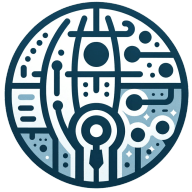In the dynamic world of business, staying ahead of the curve is crucial. One area that is constantly evolving is workforce planning and development. This blog post will delve into the latest trends in this field, providing insights that can help businesses adapt, thrive, and maintain a competitive edge. We will explore how these trends are shaping the future of work and what they mean for both employers and employees.
The Rise of Remote Work
The global pandemic has accelerated the shift towards remote work. Companies are now realizing that employees can work effectively from home, reducing the need for physical office space. This trend is not just a temporary response to the pandemic; it's a fundamental shift in how businesses operate.
Remote work offers several benefits. It allows companies to tap into a global talent pool, rather than being restricted to a specific geographical area. It also provides employees with greater flexibility, improving work-life balance and potentially increasing job satisfaction.
However, remote work also presents challenges. Companies need to ensure that employees have the necessary tools and technology to work effectively from home. They also need to find ways to maintain team cohesion and company culture in a virtual environment.
Emphasis on Employee Well-being
Employee well-being is becoming a central focus in workforce planning and development. Companies are recognizing that happy, healthy employees are more productive and less likely to leave the company.
This trend is reflected in a growing emphasis on mental health support in the workplace. Companies are offering resources such as counselling services and mindfulness training to help employees manage stress and prevent burnout.
Physical health is also a key focus. Many companies are providing wellness programs that encourage healthy habits, such as regular exercise and good nutrition. Some are even offering incentives for participation in these programs, such as discounts on health insurance premiums.
Upskilling and Reskilling
The rapid pace of technological change is making certain skills obsolete, while creating demand for new ones. To stay competitive, companies need to ensure that their employees have the skills they need to perform their jobs effectively.
This is leading to a trend towards upskilling and reskilling. Companies are investing in training and development programs to help their employees acquire new skills and update their existing ones.
This trend is beneficial for employees as well. By continually learning and developing their skills, they can stay relevant in the job market and enhance their career prospects.
Data-Driven Workforce Planning
Data is playing an increasingly important role in workforce planning. Companies are using data analytics to make informed decisions about hiring, training, and workforce management.
For example, companies can use data to identify skills gaps in their workforce and develop targeted training programs. They can also use data to predict future workforce needs, helping them to plan ahead and avoid talent shortages.
However, using data effectively requires a certain level of expertise. Companies need to invest in data analytics tools and training to get the most out of their data.
Diversity and Inclusion
Diversity and inclusion are becoming key priorities in workforce planning. Companies are recognizing that a diverse workforce can bring a range of perspectives and ideas, fostering innovation and improving decision-making.
To promote diversity and inclusion, companies are implementing a variety of strategies. These include unconscious bias training, mentorship programs, and policies that promote equal opportunities.
However, achieving diversity and inclusion requires more than just policies and programs. It requires a commitment to creating a culture where everyone feels valued and included.
The Gig Economy
The gig economy is another trend that is reshaping the workforce. More and more people are choosing to work as freelancers or independent contractors, rather than as traditional employees.
This trend offers benefits for both companies and workers. Companies can tap into a flexible workforce, scaling up or down as needed. Workers, on the other hand, can enjoy greater flexibility and control over their work.
However, the gig economy also presents challenges. Companies need to find ways to manage and engage a dispersed, independent workforce. Workers, meanwhile, may face issues such as job insecurity and lack of benefits.
Navigating the Future of Workforce Planning and Development
The trends in workforce planning and development are clear: flexibility, well-being, continuous learning, data-driven decisions, diversity, and the gig economy are shaping the future of work. Companies that can adapt to these trends will be better positioned to attract and retain talent, drive innovation, and stay competitive. However, navigating these trends requires a proactive approach and a willingness to embrace change. The future of work is here, and it's time to get on board.

